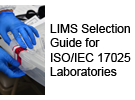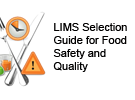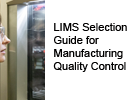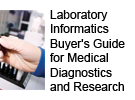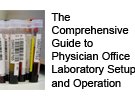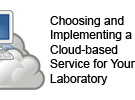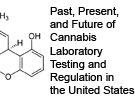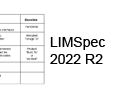Difference between revisions of "User:Shawndouglas/sandbox/sublevel3"
Shawndouglas (talk | contribs) |
Shawndouglas (talk | contribs) |
||
| (51 intermediate revisions by the same user not shown) | |||
| Line 1: | Line 1: | ||
==The laws themselves== | |||
=== | ===1. Federal Telecommunications Act of 1996, Section 255 ([https://www.law.cornell.edu/uscode/text/47/255 47 U.S.C. § 255 - Access by persons with disabilities])=== | ||
''' | <blockquote>'''(b) Manufacturing''' | ||
A manufacturer of telecommunications equipment or customer premises equipment shall ensure that the equipment is designed, developed, and fabricated to be accessible to and usable by individuals with disabilities, if readily achievable. | |||
'''(c) Telecommunications services''' | |||
A provider of telecommunications service shall ensure that the service is accessible to and usable by individuals with disabilities, if readily achievable. | |||
'''(d) Compatibility''' | |||
Whenever the requirements of subsections (b) and (c) are not readily achievable, such a manufacturer or provider shall ensure that the equipment or service is compatible with existing peripheral devices or specialized customer premises equipment commonly used by individuals with disabilities to achieve access, if readily achievable.</blockquote> | |||
''' | The term '''disability''' is [https://www.law.cornell.edu/uscode/text/42/12102 defined here]. You can read the full entry, but the basics are: | ||
<blockquote>'''(1) Disability''' The term “disability” means, with respect to an individual— | |||
:'''(A)''' a physical or mental impairment that substantially limits one or more major life activities of such individual; | |||
''' | :'''(B)''' a record of such an impairment; or | ||
:'''(C)''' being regarded as having such an impairment (as described in paragraph (3)).</blockquote> | |||
''' | The term '''readily achievable''' is [https://www.law.cornell.edu/uscode/text/42/12181 defined here]. It is defines as: | ||
<blockquote>'''(9) Readily achievable''' The term “readily achievable” means easily accomplishable and able to be carried out without much difficulty or expense. In determining whether an action is readily achievable, factors to be considered include— | |||
''' | :'''(A)''' the nature and cost of the action needed under this chapter; | ||
:'''(B)''' the overall financial resources of the facility or facilities involved in the action; the number of persons employed at such facility; the effect on expenses and resources, or the impact otherwise of such action upon the operation of the facility; | |||
:'''(C)''' the overall financial resources of the covered entity; the overall size of the business of a covered entity with respect to the number of its employees; the number, type, and location of its facilities; and | |||
:'''(D)''' the type of operation or operations of the covered entity, including the composition, structure, and functions of the workforce of such entity; the geographic separateness, administrative or fiscal relationship of the facility or facilities in question to the covered entity.</blockquote> | |||
=== | ===2. Rehabilitation Act of 1973, Section 508, amended ([https://www.law.cornell.edu/uscode/text/29/794d 29 U.S.C. 794d] - Electronic and information technology)=== | ||
''' | There's a government website dedicated to Section 508: [https://www.section508.gov/ https://www.section508.gov/] The related laws and polices can be [https://www.section508.gov/manage/laws-and-policies/ found here]. The intro states (italics emphasis mine): | ||
* No | |||
<blockquote>In 1998, Congress amended the Rehabilitation Act of 1973 to require Federal agencies to make their electronic and information technology (EIT) accessible to people with disabilities. The law (29 U.S.C § 794 (d)) ''applies to all Federal agencies when they develop, procure, maintain, or use electronic and information technology''. Under Section 508, agencies must give ''disabled employees and members of the public'' access to information comparable to the access available to others. | |||
The [https://www.access-board.gov/ U.S. Access Board] is responsible for developing Information and Communication Technology (ICT) accessibility ''standards'' to ''incorporate into regulations that govern Federal procurement practices.'' On January 18, 2017, the Access Board issued a final rule that updated accessibility requirements covered by Section 508, and refreshed guidelines for telecommunications equipment subject to Section 255 of the Communications Act. The final rule went into effect on January 18, 2018. | |||
The rule updated and reorganized the Section 508 Standards and Section 255 Guidelines ''in response to market trends and innovations in technology.'' The refresh also harmonized these requirements with other guidelines and standards both in the U.S. and abroad, including standards issued by the European Commission, ''and with the World Wide Web Consortium (W3C) Web Content Accessibility Guidelines (WCAG 2.0), a globally recognized voluntary consensus standard for web content and ICT.''</blockquote> | |||
In discussing ICT, the U.S. Access Board [https://www.access-board.gov/ict/#b-summary-of-key-provisions summarized the key provisions] as such: | |||
<blockquote>The Revised 508 Standards and 255 Guidelines replace the current product-based regulatory approach with an approach based on ICT functions. The revised technical requirements, which are organized along the lines of ICT functionality, provide requirements to ensure that covered hardware, software, electronic content, and support documentation and services are accessible to people with disabilities. In addition, the revised requirements include functional performance criteria, which are outcome-based provisions that apply in two limited instances: when the technical requirements do not address one or more features of ICT or when evaluation of an alternative design or technology is needed under equivalent facilitation.</blockquote> | |||
The full (lengthy) information about the ICT Accessibility 508 Standards and 255 Guidelines is found here: [https://www.access-board.gov/ict/ https://www.access-board.gov/ict/] | |||
The specific software requirements that LabLynx will likely need to consider under Section 508 appear to be found in [https://www.access-board.gov/ict/#chapter-5-software Chapter 5: Software] and [https://www.access-board.gov/ict/#chapter-6-support-documentation-and-services Chapter 6: Support Documentation and Services]. (If for some reason LLX is in the hardware domain, they'll want to also consider[https://www.access-board.gov/ict/#chapter-4-hardware Chapter 4: Hardware] If you're curious about the underlying standards, you can find them in [https://www.access-board.gov/ict/#chapter-7-%C2%A0-referenced-standards Chapter 7: Referenced Standards]. | |||
Finally, the Section 508 government website has a full Design & Develop section that may be applicable to development process: [https://www.section508.gov/develop/ https://www.section508.gov/develop/] | |||
==Additional information== | |||
1. The Section 508 website and its glossary mention LIMS under "[https://www.section508.gov/art/glossary/#S scientific instrument]," though only secondarily. At the end: "If a scientific instrument is integrated with a computer or a monitor, the computer (and associated operating system) and the monitor would be separate EIT deliverables, requiring their own Government Product Accessibility Templates (GPAT). If the computer included application software, this software would be another EIT deliverable requiring its own GPAT." | |||
2. It appears some software can qualify for "a legally-defined Exception (Back Office)," as found in this example with STARLIMS and the VA: [https://www.oit.va.gov/Services/TRM/ToolPage.aspx?tid=7502 https://www.oit.va.gov/Services/TRM/ToolPage.aspx?tid=7502] | |||
3. Some additional posts and guides that may be revealing: | |||
* [https://www.levelaccess.com/how-do-i-determine-if-my-web-site-or-application-is-section-508-compliant/ How do I determine if my website or application is Section 508 compliant?] | |||
* [https://ftp.cdc.gov/pub/Software/RegistryPlus/508%20Compliance/508softwareandos.doc GSA Guide For Making Software Applications and Operating Systems Accessible] (.doc file; NOTE: No date, so not sure if incorporates amended material, so be careful) | |||
* [https://www.dhs.gov/publication/dhs-section-508-compliance-test-processes DHS Section 508 Compliance Test Processes] | |||
Latest revision as of 21:23, 28 February 2022
The laws themselves
1. Federal Telecommunications Act of 1996, Section 255 (47 U.S.C. § 255 - Access by persons with disabilities)
(b) Manufacturing
A manufacturer of telecommunications equipment or customer premises equipment shall ensure that the equipment is designed, developed, and fabricated to be accessible to and usable by individuals with disabilities, if readily achievable.
(c) Telecommunications services
A provider of telecommunications service shall ensure that the service is accessible to and usable by individuals with disabilities, if readily achievable.
(d) Compatibility
Whenever the requirements of subsections (b) and (c) are not readily achievable, such a manufacturer or provider shall ensure that the equipment or service is compatible with existing peripheral devices or specialized customer premises equipment commonly used by individuals with disabilities to achieve access, if readily achievable.
The term disability is defined here. You can read the full entry, but the basics are:
(1) Disability The term “disability” means, with respect to an individual—
- (A) a physical or mental impairment that substantially limits one or more major life activities of such individual;
- (B) a record of such an impairment; or
- (C) being regarded as having such an impairment (as described in paragraph (3)).
The term readily achievable is defined here. It is defines as:
(9) Readily achievable The term “readily achievable” means easily accomplishable and able to be carried out without much difficulty or expense. In determining whether an action is readily achievable, factors to be considered include—
- (A) the nature and cost of the action needed under this chapter;
- (B) the overall financial resources of the facility or facilities involved in the action; the number of persons employed at such facility; the effect on expenses and resources, or the impact otherwise of such action upon the operation of the facility;
- (C) the overall financial resources of the covered entity; the overall size of the business of a covered entity with respect to the number of its employees; the number, type, and location of its facilities; and
- (D) the type of operation or operations of the covered entity, including the composition, structure, and functions of the workforce of such entity; the geographic separateness, administrative or fiscal relationship of the facility or facilities in question to the covered entity.
2. Rehabilitation Act of 1973, Section 508, amended (29 U.S.C. 794d - Electronic and information technology)
There's a government website dedicated to Section 508: https://www.section508.gov/ The related laws and polices can be found here. The intro states (italics emphasis mine):
In 1998, Congress amended the Rehabilitation Act of 1973 to require Federal agencies to make their electronic and information technology (EIT) accessible to people with disabilities. The law (29 U.S.C § 794 (d)) applies to all Federal agencies when they develop, procure, maintain, or use electronic and information technology. Under Section 508, agencies must give disabled employees and members of the public access to information comparable to the access available to others.
The U.S. Access Board is responsible for developing Information and Communication Technology (ICT) accessibility standards to incorporate into regulations that govern Federal procurement practices. On January 18, 2017, the Access Board issued a final rule that updated accessibility requirements covered by Section 508, and refreshed guidelines for telecommunications equipment subject to Section 255 of the Communications Act. The final rule went into effect on January 18, 2018.
The rule updated and reorganized the Section 508 Standards and Section 255 Guidelines in response to market trends and innovations in technology. The refresh also harmonized these requirements with other guidelines and standards both in the U.S. and abroad, including standards issued by the European Commission, and with the World Wide Web Consortium (W3C) Web Content Accessibility Guidelines (WCAG 2.0), a globally recognized voluntary consensus standard for web content and ICT.
In discussing ICT, the U.S. Access Board summarized the key provisions as such:
The Revised 508 Standards and 255 Guidelines replace the current product-based regulatory approach with an approach based on ICT functions. The revised technical requirements, which are organized along the lines of ICT functionality, provide requirements to ensure that covered hardware, software, electronic content, and support documentation and services are accessible to people with disabilities. In addition, the revised requirements include functional performance criteria, which are outcome-based provisions that apply in two limited instances: when the technical requirements do not address one or more features of ICT or when evaluation of an alternative design or technology is needed under equivalent facilitation.
The full (lengthy) information about the ICT Accessibility 508 Standards and 255 Guidelines is found here: https://www.access-board.gov/ict/
The specific software requirements that LabLynx will likely need to consider under Section 508 appear to be found in Chapter 5: Software and Chapter 6: Support Documentation and Services. (If for some reason LLX is in the hardware domain, they'll want to also considerChapter 4: Hardware If you're curious about the underlying standards, you can find them in Chapter 7: Referenced Standards.
Finally, the Section 508 government website has a full Design & Develop section that may be applicable to development process: https://www.section508.gov/develop/
Additional information
1. The Section 508 website and its glossary mention LIMS under "scientific instrument," though only secondarily. At the end: "If a scientific instrument is integrated with a computer or a monitor, the computer (and associated operating system) and the monitor would be separate EIT deliverables, requiring their own Government Product Accessibility Templates (GPAT). If the computer included application software, this software would be another EIT deliverable requiring its own GPAT."
2. It appears some software can qualify for "a legally-defined Exception (Back Office)," as found in this example with STARLIMS and the VA: https://www.oit.va.gov/Services/TRM/ToolPage.aspx?tid=7502
3. Some additional posts and guides that may be revealing:
- How do I determine if my website or application is Section 508 compliant?
- GSA Guide For Making Software Applications and Operating Systems Accessible (.doc file; NOTE: No date, so not sure if incorporates amended material, so be careful)
- DHS Section 508 Compliance Test Processes


